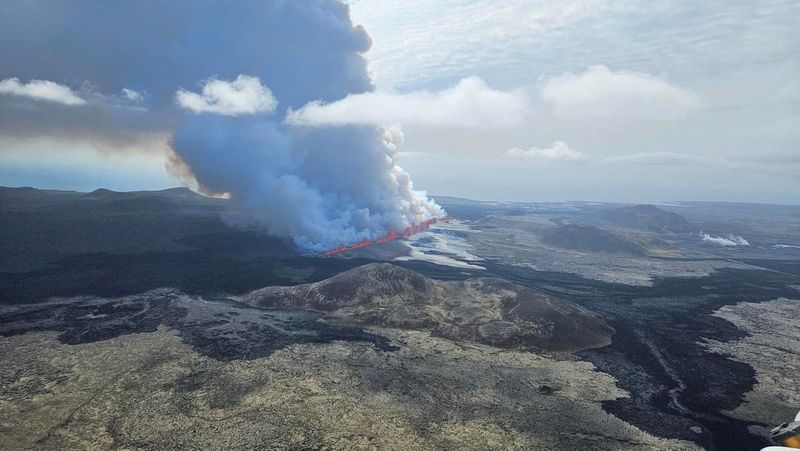COPENHAGEN (Reuters) -A volcano south of Iceland's capital Reykjavik spewed smoke and lava for a second day on Thursday although at a significantly slower pace, authorities said.
The eruption, the fifth since December, was the most powerful in the area since volcanic systems on the Reykjanes peninsula became active three years ago after lying dormant for eight centuries, according to the Icelandic Met Office.
"Since yesterday afternoon, the activity at the volcanic fissure (...) has decreased significantly," Iceland's Met Office said in a statement on Thursday.
The fishing town of Grindavik, where only a few people have returned after several homes were destroyed by lava earlier this year, was again subject to an evacuation order, as was the nearby Blue Lagoon outdoor spa, a major tourist attraction.
Jona Runa Erlingsdottir, manager at a saltfish factory in Grindavik, was working when the eruption began on Wednesday and a siren was heard across the town.
"We only had an hour to clean up the place and get out," Erlingsdottir told Reuters.
The fish factory resumed operations in April after being relocated to a nearby town due to the previous eruptions. Large dykes were constructed earlier this year around Grindavik to divert lava flows away from the town.
"It was a little bit strange to start working there again and see the safety walls around the town. We don't have the same view like before," she said.
"I don't think it's ever going to be the same in Grindavik. I'm just hoping that this is the last eruption," said Erlingsdottir.
The met office said lava flows had reached the dykes built around Grindavik, diverting the molten rock west around the town.

There were no reports of injuries following the eruption.
Keflavik airport, Iceland's biggest, was operating as usual.